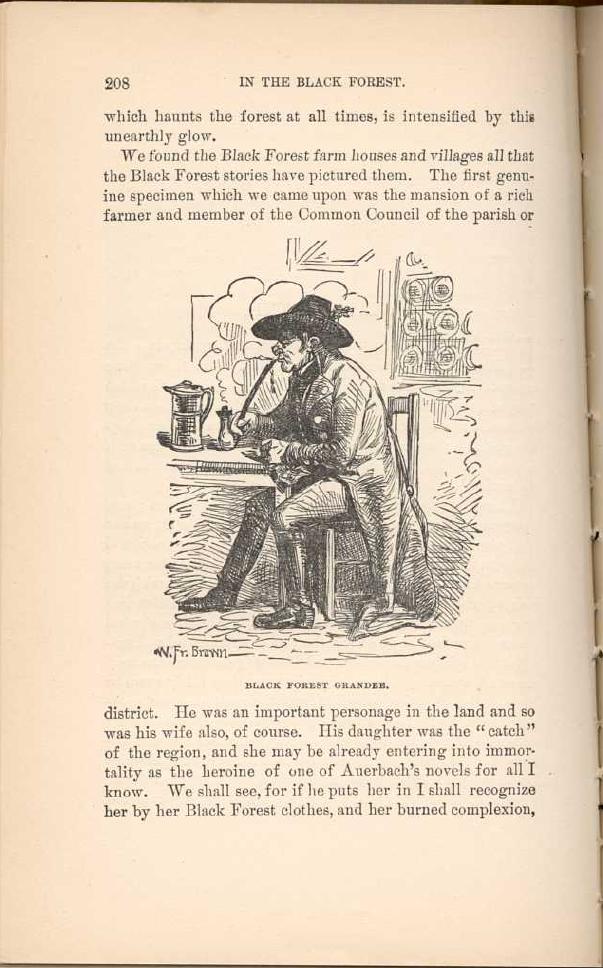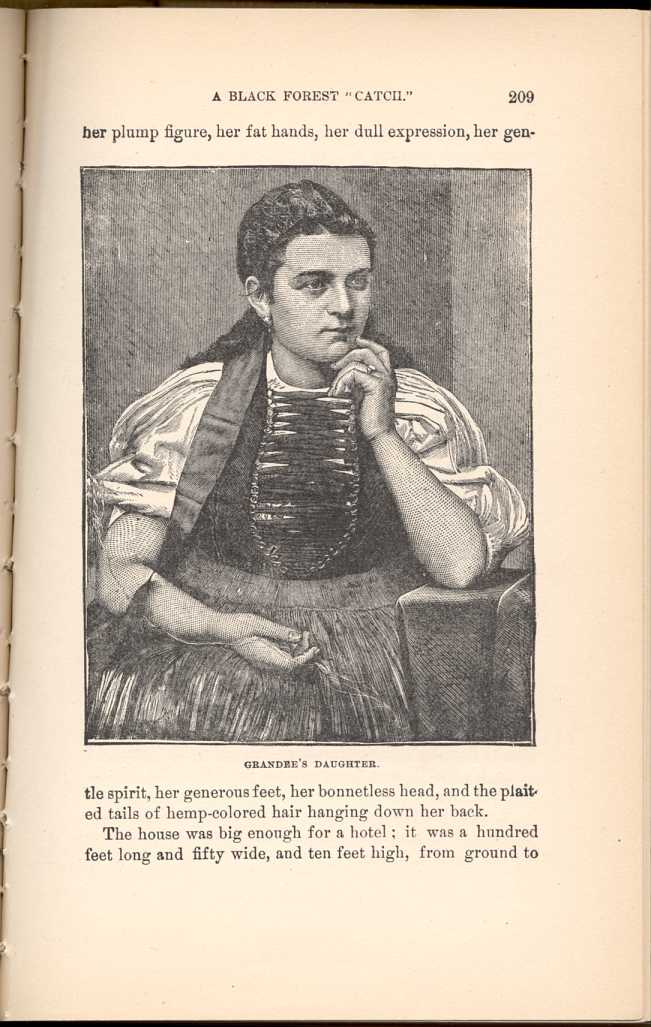| CHAPTER XXII
A Tramp Abroad | ||
From Baden-Baden we made the customary trip into the Black Forest. We were on foot most of the time. One cannot describe those noble woods, nor the feeling with which they inspire him. A feature of the feeling, however, is a deep sense of contentment; another feature of it is a buoyant, boyish gladness; and a third and very conspicuous feature of it is one's sense of the remoteness of the work-day world and his entire emancipation from it and its affairs.
Those woods stretch unbroken over a vast region; and everywhere they are such dense woods, and so still, and so piney and fragrant. The stems of the trees are trim and straight, and in many places all the ground is hidden for miles under a thick cushion of moss of a vivid green color, with not a decayed or ragged spot in its surface, and not a fallen leaf or twig to mar its immaculate tidiness. A rich cathedral gloom pervades the pillared aisles; so the stray flecks of sunlight that strike a trunk here and a bough yonder are strongly accented, and when they strike the moss they fairly seem to burn. But the weirdest effect, and the most enchanting is that produced by the diffused light of the low afternoon sun; no single ray is able to pierce its way in, then, but the diffused light takes color from moss and foliage, and pervades the place like a faint, greet-tinted mist, the theatrical fire of fairyland. The suggestion of mystery and the supernatural
We found the Black Forest farmhouses and villages
all that the Black Forest stories have pictured them.
The first genuine specimen which we came upon was
the mansion of a rich farmer and member of the Common
Council of the parish or

BLACK FOREST GRANDEE
[Description: Etching of a figure seated at a table, in a large
hat, great coat and boots, smoking a pipe.
]

THE GRANDEE'S DAUGHTER
[Description: A detailed, large etching of a young woman wearing a Bavarian style outfit, in a subdued mood, her left hand under her chin. ]The house was big enough for a hotel; it was a hundred feet long and fifty wide, and ten feet high, from ground to
We became very familiar with the fertilizer in the Forest. We fell unconsciously into the habit of judging of a man's station in life by this outward and eloquent sign. Sometimes we said, "Here is a poor devil, this is manifest." When we saw a stately accumulation, we said, "Here is a banker." When we encountered a country-seat surrounded by an Alpine pomp of manure, we said, "Doubtless a duke lives here."
The importance of this feature has not been properly magnified in the Black Forest stories. Manure is evidently the Black-Forester's main treasure,—his coin, his jewel, his pride, his Old Master, his ceramics, his bric-a-brac, his darling, his title to public consideration, envy, veneration, and his first solicitude when he gets ready to make his will. The true Black Forest novel, if it is ever written, will be skeletoned somewhat in this way:
| CHAPTER XXII
A Tramp Abroad | ||